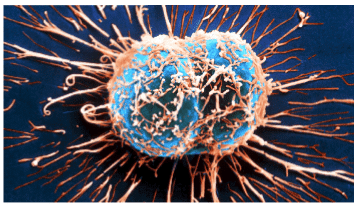The IELTS Academic Reading test is one of the most challenging parts of the IELTS test. There are 3 texts, each one harder than the previous one! If you’re not prepared, it’s easy to lose a lot of points. This is why practicing is crucial.
Prepare for the IELTS Academic Reading test online with our free practice tests down below.
Feel free to check out our free online IELTS Practice Tests page as well!
Free IELTS Academic Reading Practice Tests
Discover our IELTS Academic Reading practice tests by section:
IELTS Academic Reading Section 1
IELTS Academic Reading Section 2
IELTS Academic Reading Section 3
Free IELTS General Training Reading Practice Tests
IELTS General Training Reading Practice Test
IELTS General Training Reading Section 1
IELTS General Training Reading Section 2
IELTS General Training Reading Section 3
IELTS Academic Reading Practice Test Task 1: First Text
IELTS Reading Task 1 is the easiest text of the Reading paper. It’s very important you don’t spend more than 20 minutes on Task 1 – if you do, you’re almost guaranteed to not finish all the questions! So keep an eye on the clock for Task 1 especially.
BIOMES
A tropical rain forest has warm temperatures and abundant precipitation throughout most, if not all, of the year. This climate typically produces lush, thick forests that can completely shade the forest floor. The limiting factor for plants that live on the forest floor is sunlight. In fact, As little as 1% of the sunlight that strikes the uppermost branches of the trees, called the canopy, may make it through to the ground. The soil is very thin and low in nutrients. Most organisms that live in this biome inhabit branches of the upper canopy. Some plants called epiphytes, grow above the ground on the branches of trees. A few of these, such as some figs, sprout and develop on branches and then send down long lengths of roots that grow into the ground below.
Grassland biomes occur in a variety of climates. A grassland is an area where the primary plant life is grass. Tropical grasslands are found in the tropical climate zones of South America, Africa, and Australia. Temperate grasslands are found in the temperate climate zones of South Africa, Eastern Europe, and central North America.
Tropical grasslands, also called savannas, are covered with grass plants that may stand 1 to 2 m (3 to 7 feet) in height. Some grasslands have scattered trees or shrubs, but the trees are never as thick and lush as in the tropical rain forests. The limiting factor in the savanna is rainfall. For five months or more each year, Precipitation averages at most 10 cm (4 inches) a month; often there is much less. During the rainy season, however, water can replenish lakes, rivers, streams, and wetlands and form temporary ponds. This biome is home to plants and animals that have adapted to the extreme shifts in moisture.
Temperate grasslands receive 50-90 cm (20-35 inches) of annual precipitation, most occurring as rain in the late spring and early summer. Summers may be warm or quite hot, depending on the latitude of the grassland. Under such arid conditions, fast spreading fires are common. Some plants in temperate grasslands have adapted to fire by producing fire resistant seeds that require the fire’s heat to start generation.
Desert biomes receive less than 25 cm (10 inches) of precipitation annually, and are always characterized by a very dry, or arid climate. There are four different types of deserts: hot, semiarid, coastal, and cold.
In the hot deserts, such as the Sonoran Desert in Arizona, the daily summer temperature may easily top 38°C (100°F). At night, however, the temperature can drop by 10°C or more. During the winter, the temperature may be as low as 0°C (32°F). The precipitation falls as rain in hot deserts.
Semiarid deserts, like hot deserts, have long and dry summers and low amounts of rain in the winter. In comparison with hot deserts, however, temperatures are cooler and rarely exceed 38°C. Coastal deserts are characterized by cool winters followed by relatively long, warm summers. Temperatures range from a maximum of 35°C (95°F) in the summer to -4°C (25°F) in the winter. In cold deserts, such as the Great Basin of the western United States, precipitation falls evenly throughout the year and often occurs as snow in the winter. Summer temperatures range between 10°C (50°F) at night to 24°C (75°F) during the day, and winter temperatures can drop below freezing.
Plants use a variety of strategies to survive a desert’s heat and lack of moisture. The reduced surface area of a cactus’s spines helps it to retain more water by avoiding moisture loss from transpiration. Many desert plants have the ability to conserve or store water over a long period of time. Some desert plants, such as mesquite, have extremely long root systems that absorb water by reaching down to the water table. Desert plants also have heat-and-drought resistant seeds.
A key feature of temperate biomes is their distinguishable seasons. The growing season occurs during the warmer temperatures from mid spring to mid fall and depends upon the availability of water. The temperate deciduous forest typically receives about 75 to 150 cm (30 – 59 inches) of precipitation spread over the entire year as rain or snow. This biome is characterized by hot summers and cold winters. Deciduous trees have adapted to winter temperatures by dropping their leaves and going dormant during the cold season. Trees, such as oaks, beeches, and maples, along with shrubs, lichens, and mosses, make up the main vegetation.
The temperate rainforest does not receive precipitation evenly spaced across the year. Instead, it has one long wet season and a relatively dry summer, during which fog and low-lying clouds provide the needed moisture. Precipitation in the temperate rain forest averages over 250 cm (98 inches) per year. Evergreen conifers, such as spruces, Douglas firs, and redwoods, dominate this biome. Coniferous trees retain their needles all year. Mosses, lichens, and ferns are plant species found on the forest floor.
And last but not least, The taiga, also known as the boreal forest, is located in cooler climates. Winters are long and cold, often lasting six months or more. The average winter temperature is below freezing. Summers are short, typically with only 2 to 3 months of frost-free days. However, they may be quite humid and warm, sometimes reaching 21°C (70°F). Precipitation in the taiga is 30 to 85 cm (12 to 33 inches per year, which is similar to that in the air and temperate grasslands coniferous forest is dominant in the taiga.

IELTS Academic Reading Practice Test Task 2: Second Text
As we said before, the difficulty increases as the test goes on, so the second text of the IELTS Reading test is slightly more difficult than the first one.
Divide or Conquer
A. The worst cancer cells don’t sit still. Instead they metastasize– migrate from their original sites and establish new tumors in other parts of the body. Once a cancer spreads, it is harder to eliminate. A study by developmental biologists offers a fresh clue to how cancer cells acquire the ability to invade other tissues– a prerequisite for metastasis. It reveals that invasion requires cells to stop dividing. Therefore, the two processes– invasion and proliferation– are mutually exclusive. The finding could inform cancer therapies, which typically target rapidly proliferating cancer cells.
B. David Matus of Stony Brook University and David Sherwood of Duke University turned to a transparent worm to elucidate this invading process. During the worm’s normal development, a cell known as the anchor cell breaks through a structure called the basement membrane, which initially separates the uterus from the vulva. The process is similar to how human cancer cells invade basement membranes to enter the bloodstream, which carries them to distant sites. So biologists have adopted Caenorhabditis elegans as a metastasis model organism, which they can easily image and genetically manipulate.
C. After turning on and off hundreds of genes in C.elegans, Matus’s team found a gene that regulated anchor cell invasion. When it was turned off, the anchor cell failed to invade the basement membrane. But the anchor cell also did something unexpected: it began to divide. Conversely, when the researchers inhibited cell proliferation, the anchor cell stopped dividing and began to invade again. Further experiments showed that halting cell division was both necessary and sufficient for invasion. Although anecdotal observations by pathologists have suggested this either/or situation might be the case, the new study is the first to uncover the genetic mechanism that explains why these two processes must bemutually exclusive. The results were published in October in the journal Developmental Cell.
D. The study also explains the long-standing but mysterious observation by cancer biologists that the invading front of many tumors does not contain dividing cells; instead the invasive cells lead the dividing cells behind them and push forward into healthy tissue as the tumor grows in size.
E. “This research changes how we think about cancer at some level,” Matus says. “We think of cancer as a disease of uncontrolled cell division, and in fact, many cancer drugs are designed to target these dividing cells. But our study suggests that we need to figure out how to target these nondividing cells, too, as these are the ones that are invasive.”
F. Before the insight makes its way into cancer treatments, however, it will need further testing. “Now we can take that simple model and go to more complex systems– like breast cancer tumors,” says Andrew Ewald, a cancer cell biologist at John Hopkins University. Metastatic breast cancer alone accounts for about 40,000 deaths every year in the U.S.
Choose the correct letter, A, B, C or D.
IELTS Academic Reading Practice Test Task 3: Third Text
The final text is the most difficult one.
Plastic Waste Entering World’s Oceans
The amount of plastic waste entering the world’s oceans every year could be as much as 8 million tonnes – 3% of the plastic waste produced every year, according to new research findings released on 12 February at the American Association for the Advancement of Science’s annual meeting in San Jose, California. The figure is one to three orders of magnitude higher than reports of the amount of floating plastic waste in the world’s seas. ‘That is the same as five bags filled with plastic for every foot of coastline in the world,’ says Jenna Jambeck, from the University of Georgia, US, and one of the authors of the study. ‘And it can get worse. If we assume a business as usual projection with growing populations, increasing plastic consumption and increased waste generation by 2025 this number doubles. We may be adding 17.5 million tonnes per year.’
For the past 40 years reports of plastic waste in the oceans have been commonplace. While some effort has been made to gather and look at the waste circulating in the world’s seas, no rigorous assessment has been made of how much plastic is making its way from the land into the sea. Jambeck says that this is because, until very recently, there was simply no interest. Added to this, assembling the right team of scientists with the appropriate skills was difficult. Jambeck and her colleagues came up with their figures by looking at the amount of plastic waste produced by communities living near the sea. The team drew on resources such as the World Bank’s recent audit of global waste and estimate that the 192 countries with a coastline, with a combined population of 6.4 billion people, generated 275 million tonnes of plastic waste in 2010. They then looked at just the people living 50 km from the coast in these countries, reasoning that they would be the most likely to contribute to plastics entering the world’s oceans.
Of the 99.5 million tonnes of plastic waste these people produced, around 31.9 million was classified as mismanaged, meaning it was dumped or poorly disposed of. Their model estimates that this mismanaged rubbish, combined with litter, adds up to between 4.8 million and 12.7 million tonnes of plastic waste ending up in the world’s oceans every year. One of the other authors, Kara Lavender Law with the Sea Education Association in Massachusetts, says that these figures matter because of the effects of plastics on the marine ecosystem. This ultimately affects people who consume seafood, some of which may contain small pieces of plastics or microplastics. These plastics can contain additives that may be toxic and they can also act as chemical sponges, capturing persistent compounds such as polychlorinated biphenyls. ‘This study shows far more plastic is in the ocean than we thought, and we need to find it,’ she adds.
Of the top 20 plastic polluters all but one – the US – are emerging economies such as China, Indonesia and the Philippines. Jambeck says that their work is not about finger-pointing and adds that the best way to limit the amount of plastic entering the oceans is for these countries to develop proper waste management systems. Steve Russell, vice president of the American Chemistry Council’s Plastics Division, says that used plastics should be treated as a valuable resource and be either recycled or recovered for their energy value. He notes that in 2011 many world plastic associations signed up to a document on best practice for plastic recycling and recovering. ‘The most important thing we can do right now is to keep all trash, including plastics, from getting into our oceans in the first place,’ Russell said in a statement.
Marcus Eriksen, co-founder of the 5 Gyres Institute in the US, and author on a paper that estimated the number of plastic particles in the world’s oceans, says that waste management infrastructure – albeit often informal – exists in all the top plastic polluting countries identified. He says that an issue not addressed in this study is product design, pointing out that products that are valuable to recyclers or waste pickers are less likely to end up in the sea.‘Burdening developing countries with the cost of building waste management infrastructure is not a solution, whereas innovations in product and packaging design that favours incentivised recovery, and a phaseout of single-use plastics, is proving to work where it’s implemented,’ Eriksen adds.
Question.
Look at the following opinions (Questions 28 – 32) and the list of people below. Match each opinion with the person who had this idea. Write the correct letter A-D in boxes 28 – 32 on your answer sheet. NB: You may use any letter more than once.A. Jenna Jambeck
B. Kara Lavender Law
C. Steve Russell
D. Marcus Eriksen
Start Training For The IELTS Academic Reading Test Online
That’s where GlobalExam can help you! We have work for both IELTS Academic and General tests – Listening, Reading, Writing and Speaking. You can work on specific sections such as Listening Task 1 or Reading Task 3 or all sections of the IELTS General Training for example. This is a key point to improving your score.
If you feel your grammar or vocabulary need to be improved, we also provide mock tests to help you. You can work your way through different grammar exercises and learn vocabulary and expressions through themes. Also, learning in context is one of the best ways to learn vocabulary, rather than just memorizing a list of words. You can put in your IELTS test date and target score, and we’ll create a study programme to help you reach your goal. You can also look at your statistics to see how much you’re working and where you need to study a bit more.
You’ll have all the tools you need to help you get your target score! GlobalExam can prepare you for 27 different tests, ranging from IELTS to DELF, in 5 different languages! There are over 30,000 questions created by professionals.
Whatever test you’re training for, whatever target score you have, GlobalExam can help!





